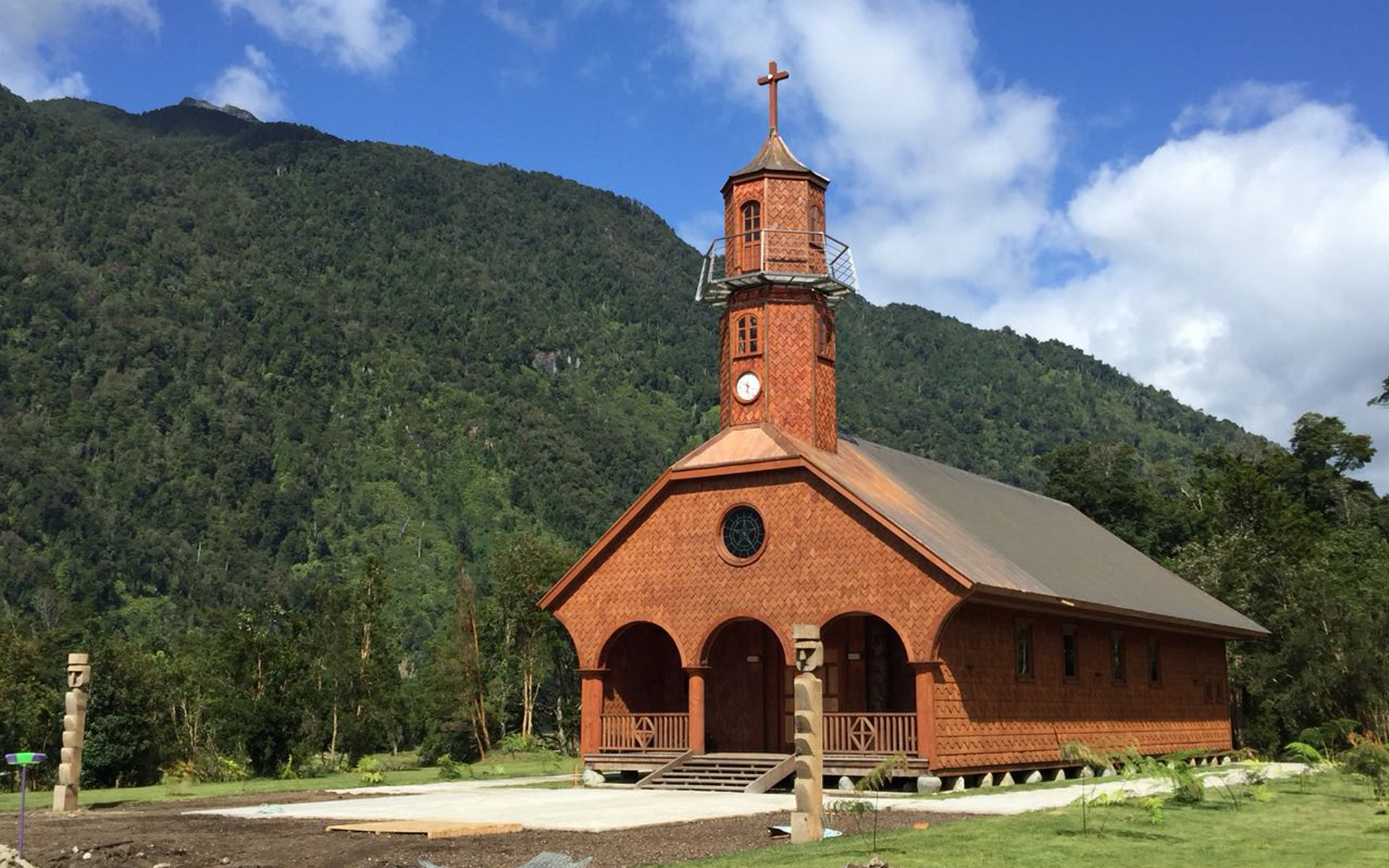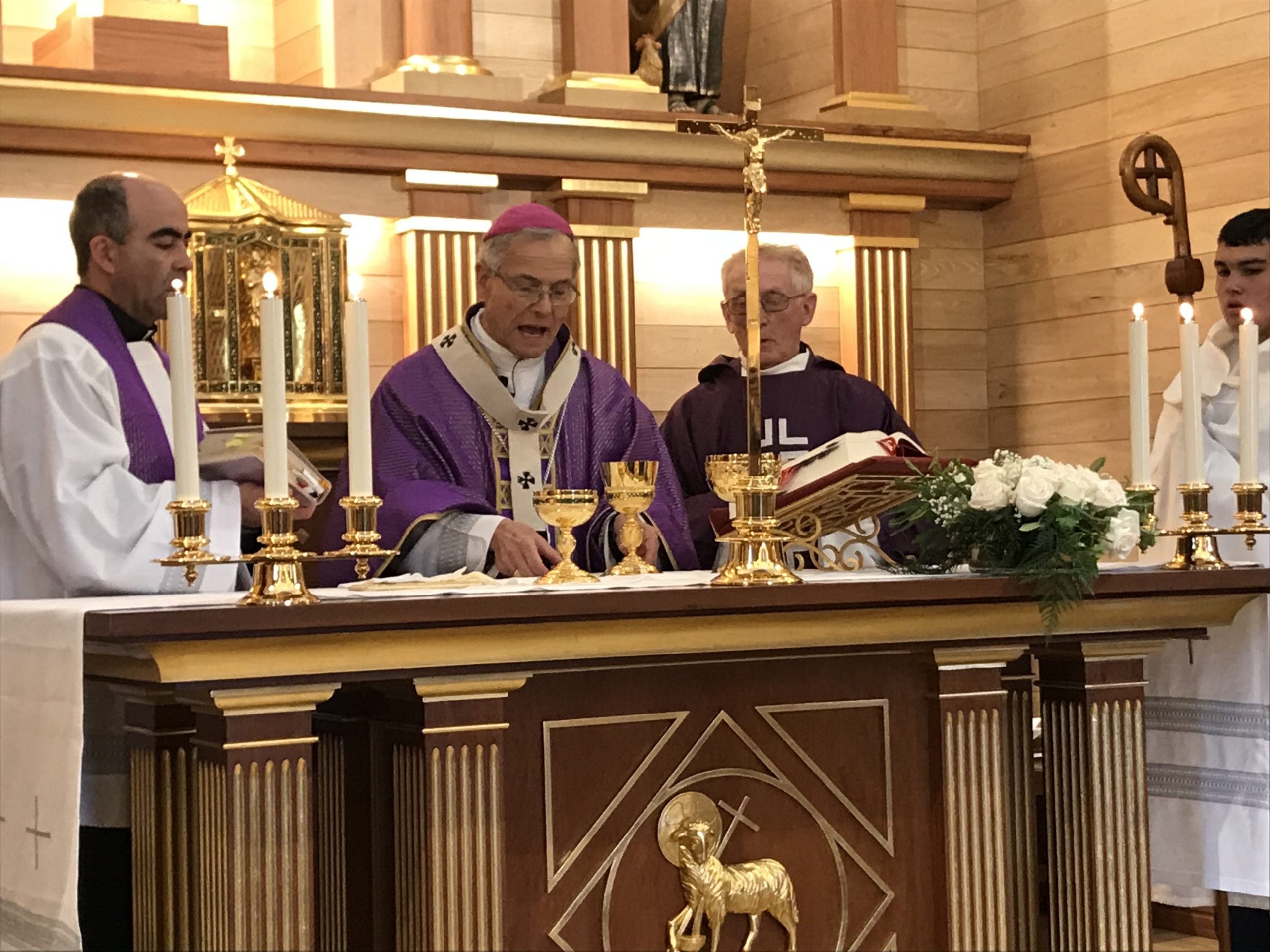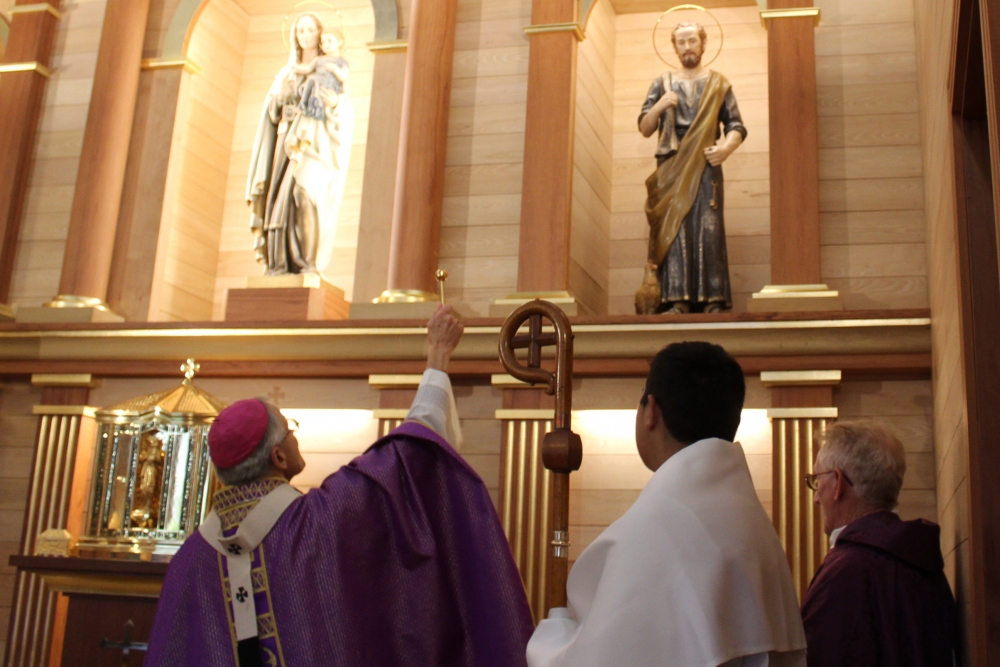Granda has participated in the construction of a new Chiloé church in Vodudahue. This temple designed by the architect Edward Rojas, is based on the typology of the Chiloé style and inspired, specifically, in the church of Colo.
UPDATING THE CHILOÉ STYLE
Some time ago we talked about the Chiloé churchesThe Chiloé Archipelago, a group of wooden churches, about 150 in number, is located in the Chiloé archipelago. They began to be built in the eighteenth century to serve the villages of the archipelago and today constitute an architectural style of their own. Sixteen of them are considered National Historic Monuments and World Heritage Sites by UNESCO.
In the beginning, the churches of Chiloé were influenced by German religious architecture and later incorporated neoclassical and self-developed elements. This style cultivated in southern Chile inaugurated what is known today as the Chiloé School of Wood Carpentry.

LITURGICAL ELEMENTS FOR WORSHIP: ALTAR, SEAT AND AMBO
Working on the interior cladding in such a particular architecture has been an exciting challenge, because to achieve a complete integration it was necessary to study and know very well the particular techniques of the style.. Only in this way has it been possible to achieve a unitary and harmonious whole.

For the realization of the altarThe style of the altarpiece, the main piece of Catholic worship, is the same as that of the altarpiece, inspired by that of the old Chiloé churches: made of wood, perforated by three niches - the central one being the highest - decorated with pilasters, cornices and pediments and enriched with painted stars and plant motifs in serene colors. Made of cedar wood, typical of the area, it incorporates golden details that emphasize it in a space surrounded by wood, and also a central relief of the Paschal Lamb that marks its character of sacrificial table. The altar is located on the left axis and is reinforced by the half-barrel vault that covers it and makes it stand out in the interior space, as a symbol of Christ.
Together with the altar, two other key elements in the Catholic liturgy form a unitary ensemble in terms of materials and style: the amboplace of the Word of God, and the siteThe ambo, symbol of the presence of Christ in the priest, who presides over the liturgical assembly. The ambo presents the symbol of the Chrismon, the initials XyP that represent the name of Christ in Greek.
SPECIALLY DESIGNED GOLDSMITHING AND CARVING
Among the pieces made by our goldsmiths and silversmiths for the church we find pieces made with the greatest care and the best materials to dignify the divine worship in a temple. Particularly noteworthy is the sagrario, placed in the axis of the church, behind the altar. It is a vertical composition piece made of gilded metal and with fire enameled borders. It is supported by a cedar wood pedestal. It contains the anagram of JHS, as a reference to the Jesuit missionaries with whom this type of church began.

At the entrance of the presbytery we find a crucifix, a liturgical and devotional image at the same time, made of polychrome wood on plaster in the traditional style.
In the central altarpiece we find several wood carvings: the Virgin of Carmen presiding over the ship, S. Joseph Carpenter to his right, in a nod to the specialized carpenters of the area who made this type of churches, and S. Pedro to his left as the first Pope of the Church.
In the side altarpieces are the images of the following figures S. Sebastian, St. Anthony of Padua, St. Therese of the Andes and St. Alberto Hurtado, all polychromed in the traditional style.
As a complement, we also conducted a way of the cross in polychrome wood with glazes. It is placed along the entire length of the nave, marking the character of pilgrimage that symbolizes the nave towards the presbytery as the door to Heaven.

